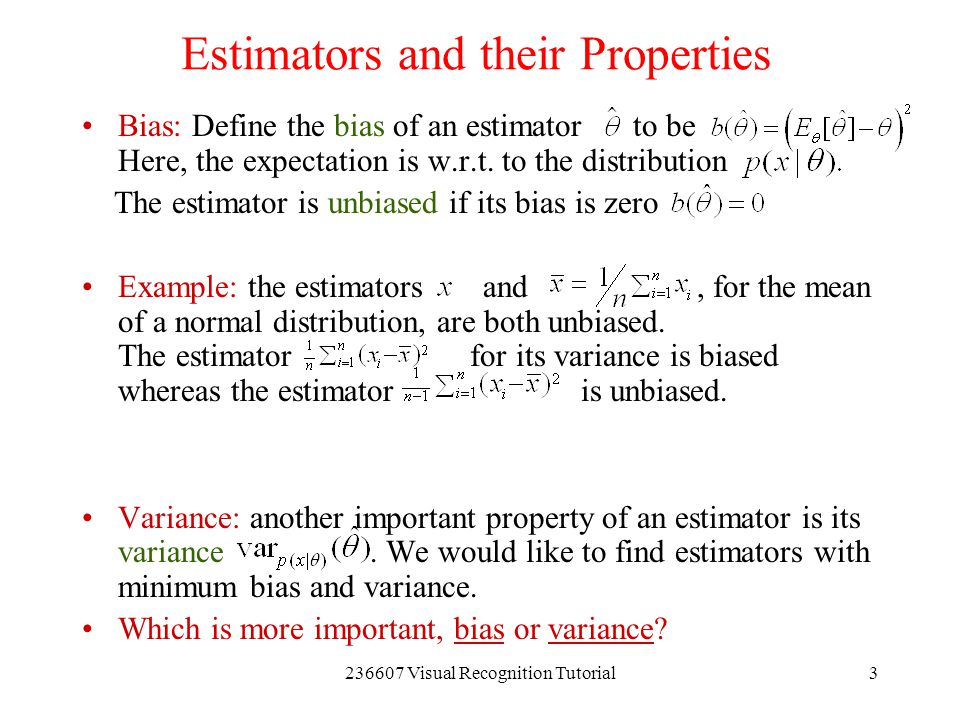
Definition Of Unbiased Estimator. Interpretation of the G-M Theorem. Then the statistic u X 1 X 2 X n is an unbiased estimator of the parameter θ. The unbiased estimator in this case was a negative amount. Finite-sample unbiasedness is one of the desirable properties of good estimators.

An estimator is consistent if as the sample size increases the estimates produced by the estimator converge to the true value of the parameter being estimated. An estimator is finite-sample unbiased when it does not show systemic bias away from the true value θ on average. An estimator is considered to be unbiased if the expected value of the estimator is equal to the population parameter. Interpretation of the G-M Theorem. Any estimator that is not Any estimator that is not unbiased is called biased. Sometimes called a point estimator.
According to this property if the statistic α is an estimator of α α it will be an unbiased estimator if the expected value of α equals the true value of the parameter α.
Any estimator that is not Any estimator that is not unbiased is called biased. Interpretation of the G-M Theorem. To be slightly more precise - consistency means that as the sample size increases the sampling distribution of the estimator becomes increasingly concentrated at. An unbiased estimator is a statistic with an expected value that matches its corresponding population parameter. If the population parameter is equivalent to the expected value then the estimator is said to be unbiased. Probability Statistics Unbiased Estimator Variance 1 Comment Estimator.